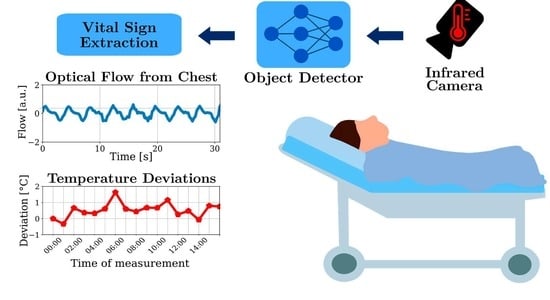A Deep Learning-Based Camera Approach for Vital Sign Monitoring Using Thermography Images for ICU Patients
Abstract
1. Introduction
2. Related Works
3. Materials and Methods
3.1. Experimental Setup and Dataset
3.2. Data Preprocessing
3.3. Detector Training and Validation
3.4. Vital Sign Extraction
3.4.1. Quantification of Disturbances
3.4.2. Temperature Trend Estimation
3.4.3. Respiratory Rate Estimation
3.5. Real-Time Feasibility on Embedded GPUs
4. Results
4.1. Detector Performance
4.2. Temperature Trend Estimation
4.3. Extraction of Respiration Rate
5. Discussion
5.1. Detector Analysis
5.2. Temperature Extraction
5.3. Monitoring of Respiration Rate
6. Conclusions and Outlook
Author Contributions
Funding
Institutional Review Board Statement
Informed Consent Statement
Conflicts of Interest
Ethical Statement
References
- Yang, Q.; Du, J.; Shao, F. Mortality rate and other clinical features observed in Open vs closed format intensive care units: A systematic review and meta-analysis. Medicine 2019, 98, e16261. [Google Scholar] [CrossRef] [PubMed]
- Goldfain, A.; Smith, B.; Arabandi, S.; Brochhausen, M.; Hogan, W.R. Vital Sign Ontology. In Proceedings of the Workshop on Bio-Ontologies; ISMB: Vienna, Austria, 2011; pp. 71–74. [Google Scholar]
- Laupland, K.; Zahar, J.R.; Adrie, C.; Schwebel, C.; Goldgran-Toledano, D.; Azoulay, E.; Garrouste-Orgeas, M.; Cohen, Y.; Jamali, S.; Souweine, B.; et al. Determinants of temperature abnormalities and influence on outcome of critical illness. Crit. Care Med. 2011, 40, 145–151. [Google Scholar] [CrossRef] [PubMed]
- Erkens, R.; Wernly, B.; Masyuk, M.; Muessig, J.; Franz, M.; Schulze, P.; Lichtenauer, M.; Kelm, M.; Jung, C. Admission Body Temperature in Critically Ill Patients as an Independent Risk Predictor for Overall Outcome. Med. Princ. Pract. 2019, 29, 389–395. [Google Scholar] [CrossRef]
- Cretikos, M.; Bellomo, R.; Hillman, K.; Chen, J.; Finfer, S.; Flabouris, A. Respiratory rate: The neglected vital sign. Med. J. Aust. 2008, 188, 657–659. [Google Scholar] [CrossRef]
- OECD/European Union (2016). Mortality from respiratory diseases. Health at a Glance: Europe 2018: State of Health in the EU Cycle; OECD Publishing: Paris, France, 2018. [Google Scholar] [CrossRef]
- Flenady, T.; Dwyer, T.; Applegarth, J. Accurate respiratory rates count: So should you! Australas. Emerg. Nurs. J. AENJ 2017, 20, 45–47. [Google Scholar] [CrossRef] [PubMed]
- Lund, C.H.; Osborne, J.W.; Kuller, J.; Lane, A.T.; Lott, J.W.; Raines, D.A. Neonatal Skin Care: Clinical Outcomes of the AWHONN/NANN Evidence-Based Clinical Practice Guideline. J. Obstet. Gynecol. Neonatal Nurs. 2001, 30, 41–51. [Google Scholar] [CrossRef]
- Hoog Antink, C.; Lyra, S.; Paul, M.; Yu, X.; Leonhardt, S. A Broader Look: Camera-Based Vital Sign Estimation across the Spectrum. Yearb. Med. Inform. 2019, 28, 102–114. [Google Scholar]
- Wu, T.; Blazek, V.; Schmitt, H.J. Photoplethysmography imaging: A new noninvasive and noncontact method for mapping of the dermal perfusion changes. In Proceedings of the Optical Techniques and Instrumentation for the Measurement of Blood Composition, Structure, and Dynamics, Amsterdam, The Netherlands, 4–8 July 2000; International Society for Optics and Photonics, SPIE: Bellingham, WA, USA, 2000; Volume 4163, pp. 62–70. [Google Scholar]
- Murthy, R.; Pavlidis, I.; Tsiamyrtzis, P. Touchless monitoring of breathing function. In Proceedings of the The 26th Annual International Conference of the IEEE Engineering in Medicine and Biology Society, San Francisco, CA, USA, 1–5 September 2004; Volume 1, pp. 1196–1199. [Google Scholar]
- Abbas, A.K.; Heimann, K.; Jergus, K.; Orlikowsky, T.; Leonhardt, S. Neonatal non-contact respiratory monitoring based on real-time infrared thermography. Biomed. Eng. Online 2011, 10, 93. [Google Scholar] [CrossRef]
- Lewis, G.F.; Gatto, R.G.; Porges, S.W. A novel method for extracting respiration rate and relative tidal volume from infrared thermography. Psychophysiology 2011, 48, 877–887. [Google Scholar] [CrossRef] [PubMed]
- Pereira, C.; Yu, X.; Czaplik, M.; Rossaint, R.; Blazek, V.; Leonhardt, S. Remote monitoring of breathing dynamics using infrared thermography. Biomed. Opt. Express 2015, 6, 4378. [Google Scholar] [CrossRef]
- Sun, G.; Negishi, T.; Kirimoto, T.; Matsui, T.; Abe, S. Noncontact Monitoring of Vital Signs with RGB and Infrared Camera and Its Application to Screening of Potential Infection. In Non-Invasive Diagnostic Methods; Marzec, M., Koprowski, R., Eds.; IntechOpen: Rijeka, Croatia, 2018; Chapter 4. [Google Scholar] [CrossRef]
- Elphick, H.; Alkali, A.; Kingshott, R.; Burke, D.; Saatchi, R. Thermal imaging method for measurement of respiratory rate. Eur. Respir. J. 2015, 46. [Google Scholar] [CrossRef]
- Schroff, F.; Kalenichenko, D.; Philbin, J. FaceNet: A unified embedding for face recognition and clustering. In Proceedings of the 2015 IEEE Conference on Computer Vision and Pattern Recognition (CVPR), Boston, MA, USA, 7–12 June 2015. [Google Scholar] [CrossRef]
- Kopaczka, M.; Nestler, J.; Merhof, D. Face Detection in Thermal Infrared Images: A Comparison of Algorithm- and Machine-Learning-Based Approaches. In Advanced Concepts for Intelligent Vision Systems; Blanc-Talon, J., Penne, R., Philips, W., Popescu, D., Scheunders, P., Eds.; Springer International Publishing: Cham, Switzerland, 2017; pp. 518–529. [Google Scholar]
- Kwasniewska, A.; Ruminski, J.; Szankin, M. Improving Accuracy of Contactless Respiratory Rate Estimation by Enhancing Thermal Sequences with Deep Neural Networks. Appl. Sci. 2019, 9, 4405. [Google Scholar] [CrossRef]
- Jagadev, P.; Giri, L.I. Non-contact monitoring of human respiration using infrared thermography and machine learning. Infrared Phys. Technol. 2020, 104, 103–117. [Google Scholar] [CrossRef]
- Jagadev, P.; Giri, L.I. Human respiration monitoring using infrared thermography and artificial intelligence. Biomed. Phys. Eng. Express 2020, 6, 035007. [Google Scholar] [CrossRef] [PubMed]
- Pereira, C.; Dohmeier, H.; Kunczik, J.; Hochhausen, N.; Tolba, R.; Czaplik, M. Contactless monitoring of heart and respiratory rate in anesthetized pigs using infrared thermography. PLoS ONE 2019, 14, e0224747. [Google Scholar] [CrossRef]
- Lorato, I.; Stuijk, S.; Meftah, M.; Kommers, D.; Andriessen, P.; Pul, C.; deHaan, G. Multi-Camera Infrared Thermography for Infant Respiration Monitoring. Biomed. Opt. Express 2020, 11, 4848–4861. [Google Scholar] [CrossRef] [PubMed]
- Chan, P.; Wong, G.; Nguyen, T.; McNeil, J.; Hopper, I. Estimation of respiratory rate using infrared video in an inpatient population: An observational study. J. Clin. Monit. Comput. 2019, 34, 1275–1284. [Google Scholar] [CrossRef]
- Hoog Antink, C.; Ferreira, J.; Paul, M.; Lyra, S.; Heimann, K.; Srinivasa, K.; Jayaraj, J.; Kumutha, J.; Orlikowsky, T.; Mohanasankar, S.; et al. Fast Body Part Segmentation and Tracking of Neonatal Video Data using Deep Learning. Med. Biol. Eng. Comput. 2020, 58, 3049–3061. [Google Scholar] [CrossRef] [PubMed]
- Bochkovskiy, A. Yolo_mark—Github Repository. 2019. Available online: https://github.com/AlexeyAB/Yolo_mark (accessed on 2 December 2020).
- Bochkovskiy, A.; Wang, C.Y.; Liao, H.Y.M. YOLOv4: Optimal Speed and Accuracy of Object Detection. arXiv 2020, arXiv:2004.10934. [Google Scholar]
- Redmon, J.; Farhadi, A. YOLOv3: An Incremental Improvement. arXiv 2018, arXiv:1804.02767. [Google Scholar]
- Bochkovskiy, A. Darknet—Github Repository. 2020. Available online: https://github.com/AlexeyAB/darknet (accessed on 2 December 2020).
- Farnebäck, G. Two-Frame Motion Estimation Based on Polynomial Expansion. In Image Analysis; Bigun, J., Gustavsson, T., Eds.; Springer: Berlin/Heidelberg, Germany, 2003; pp. 363–370. [Google Scholar]
- Longo, D.; Fauci, A.; Kasper, D.; Hauser, S.; Jameson, J.; Loscalzo, J. Harrison’s Principles of Internal Medicine, 18th ed.; McGraw-Hill Education Ltd.: New York, NY, USA, 2011. [Google Scholar]
- El Ahmar, W.A.; Erlik Nowruzi, F.; Laganiere, R. Fast Human Head and Shoulder Detection Using Convolutional Networks and RGBD Data. In Proceedings of the 2020 IEEE/CVF Conference on Computer Vision and Pattern Recognition Workshops (CVPRW), Seattle, WA, USA, 14–19 June 2020; pp. 479–487. [Google Scholar] [CrossRef]
- Saqib, M.; Khan, S.; Sharma, N.; Blumenstein, M. Person Head Detection in Multiple Scales Using Deep Convolutional Neural Networks. In Proceedings of the 2018 International Joint Conference on Neural Networks (IJCNN), Rio de Janeiro, Brazil, 8–13 July 2018; pp. 1–7. [Google Scholar] [CrossRef]
- Zhou, Y.; Ghassemi, P.; Chen, M.; McBride, D.; Casamento, J.P.; Pfefer, T.J.; Wang, Q. Clinical evaluation of fever-screening thermography: Impact of consensus guidelines and facial measurement location. J. Biomed. Opt. 2020, 25, 097002. [Google Scholar] [CrossRef]
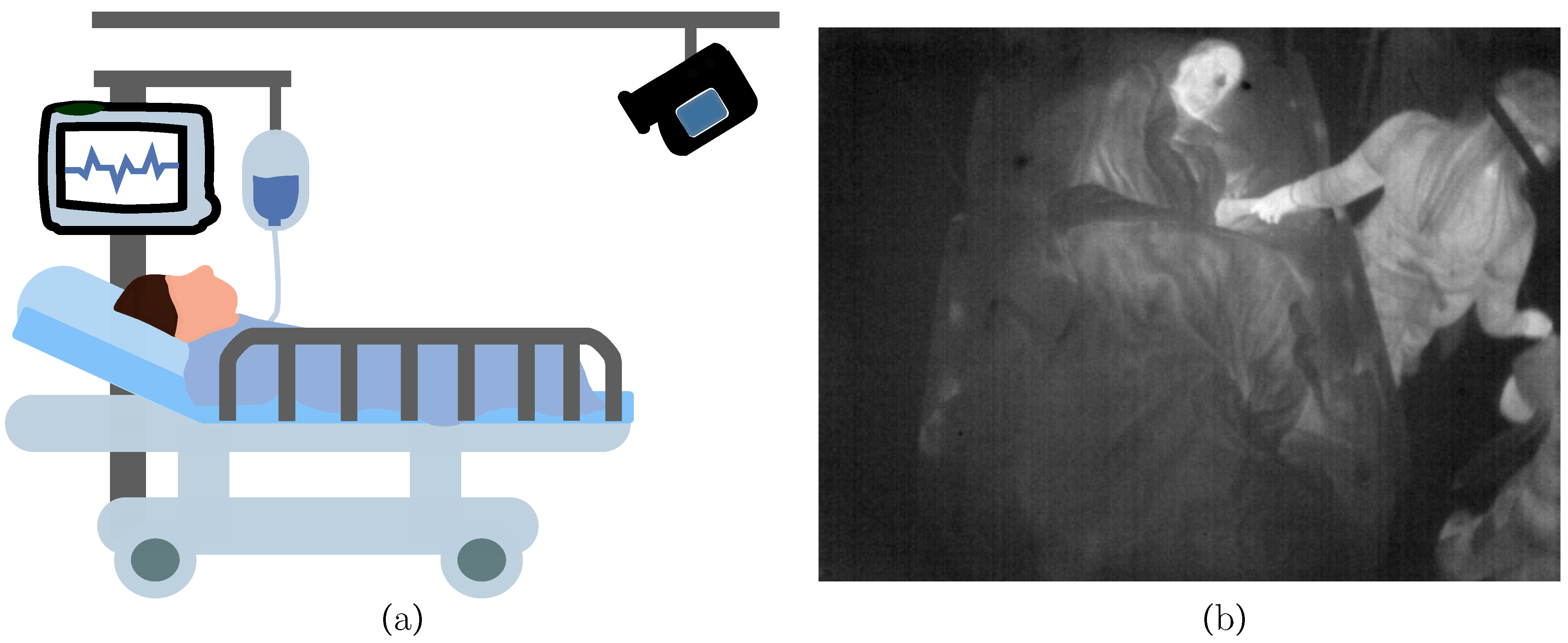


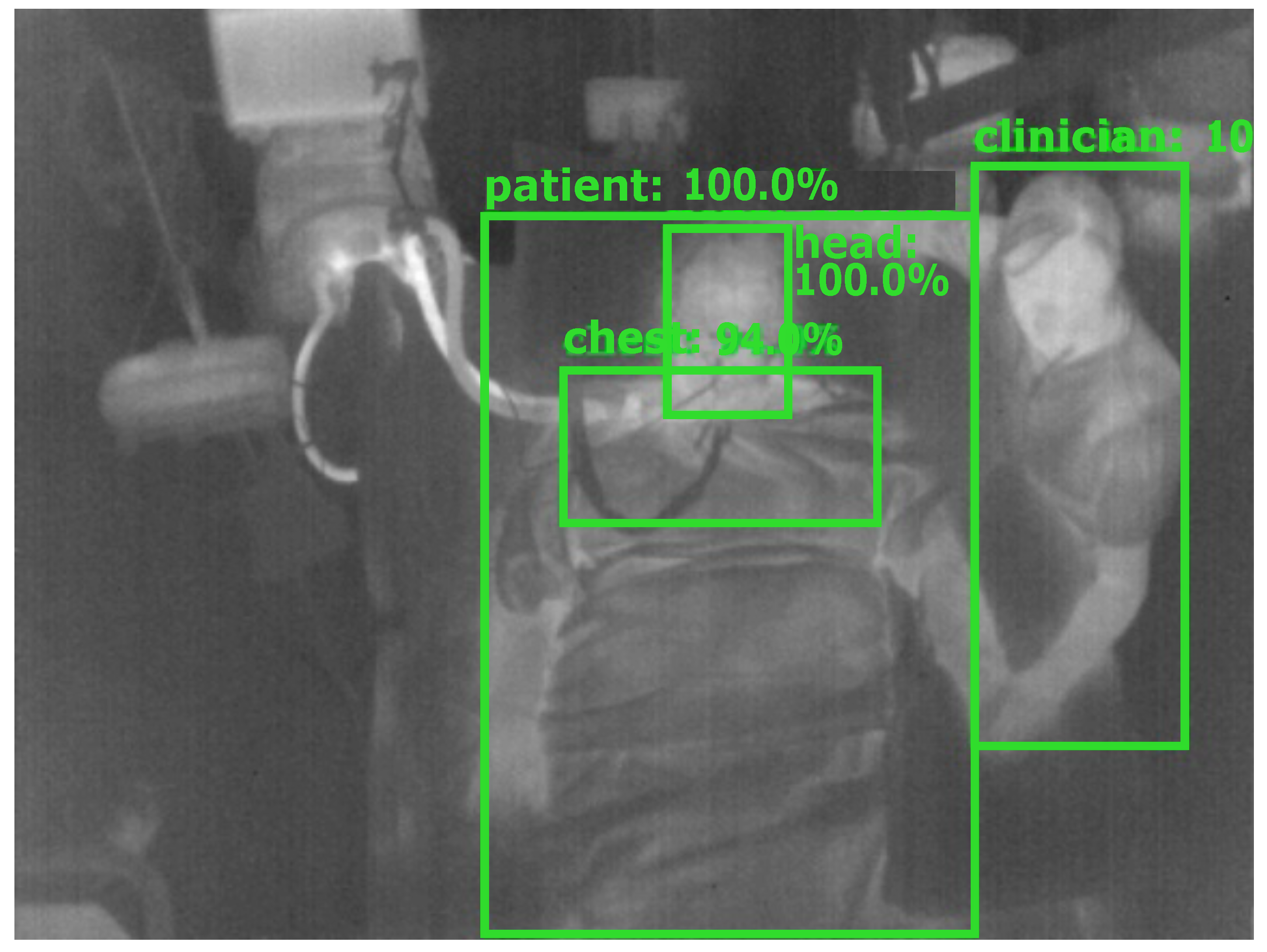



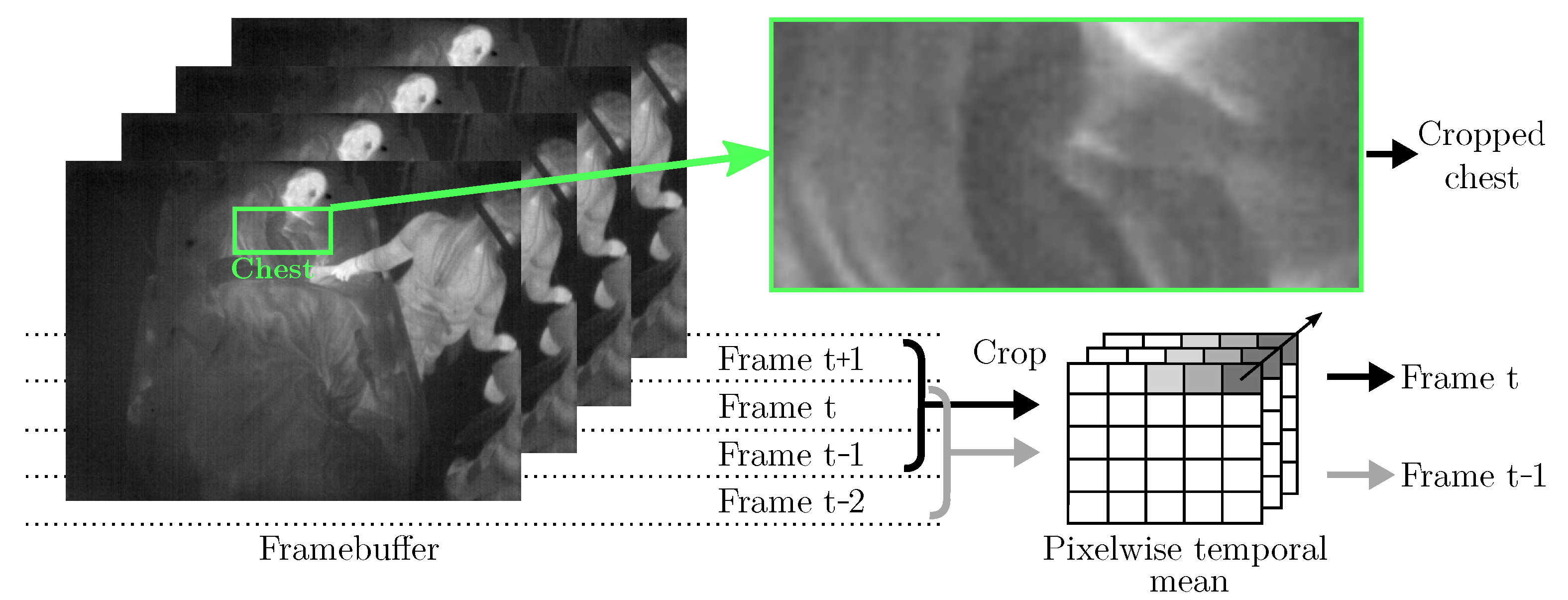

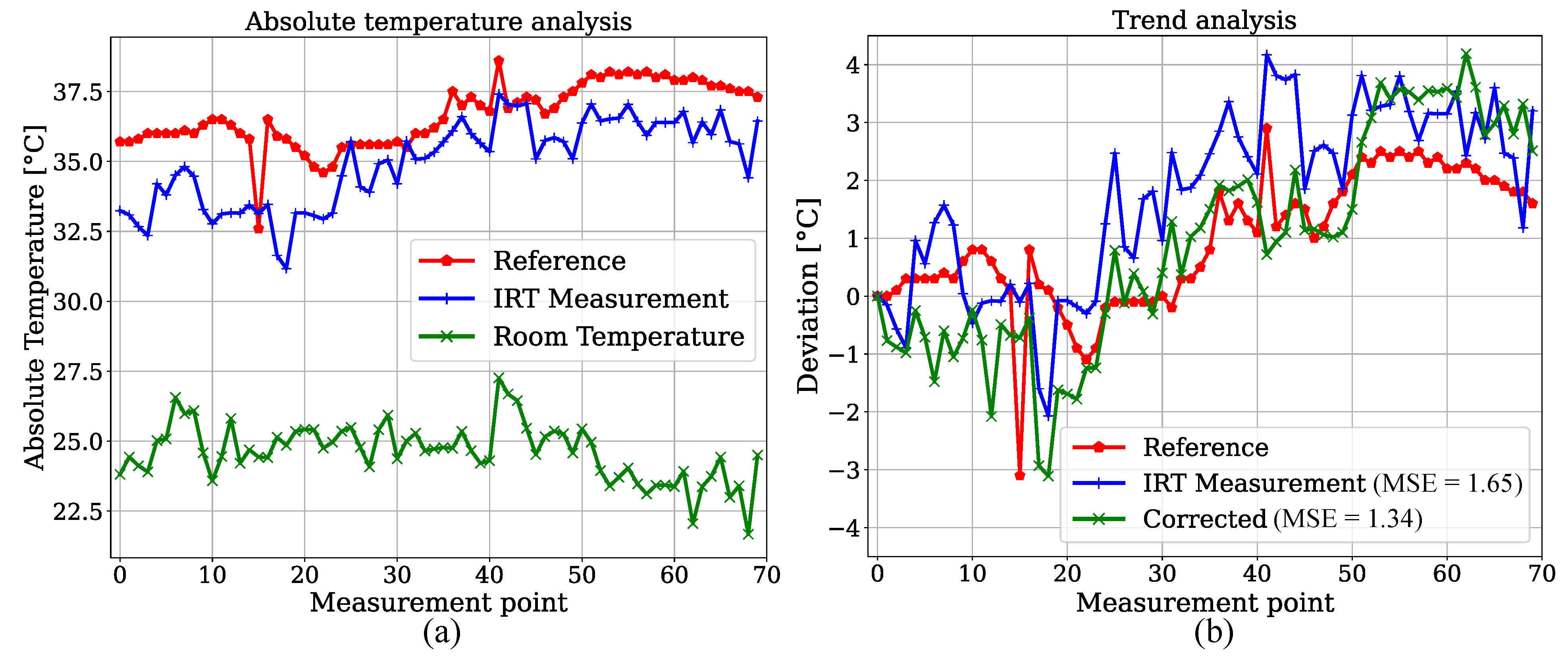

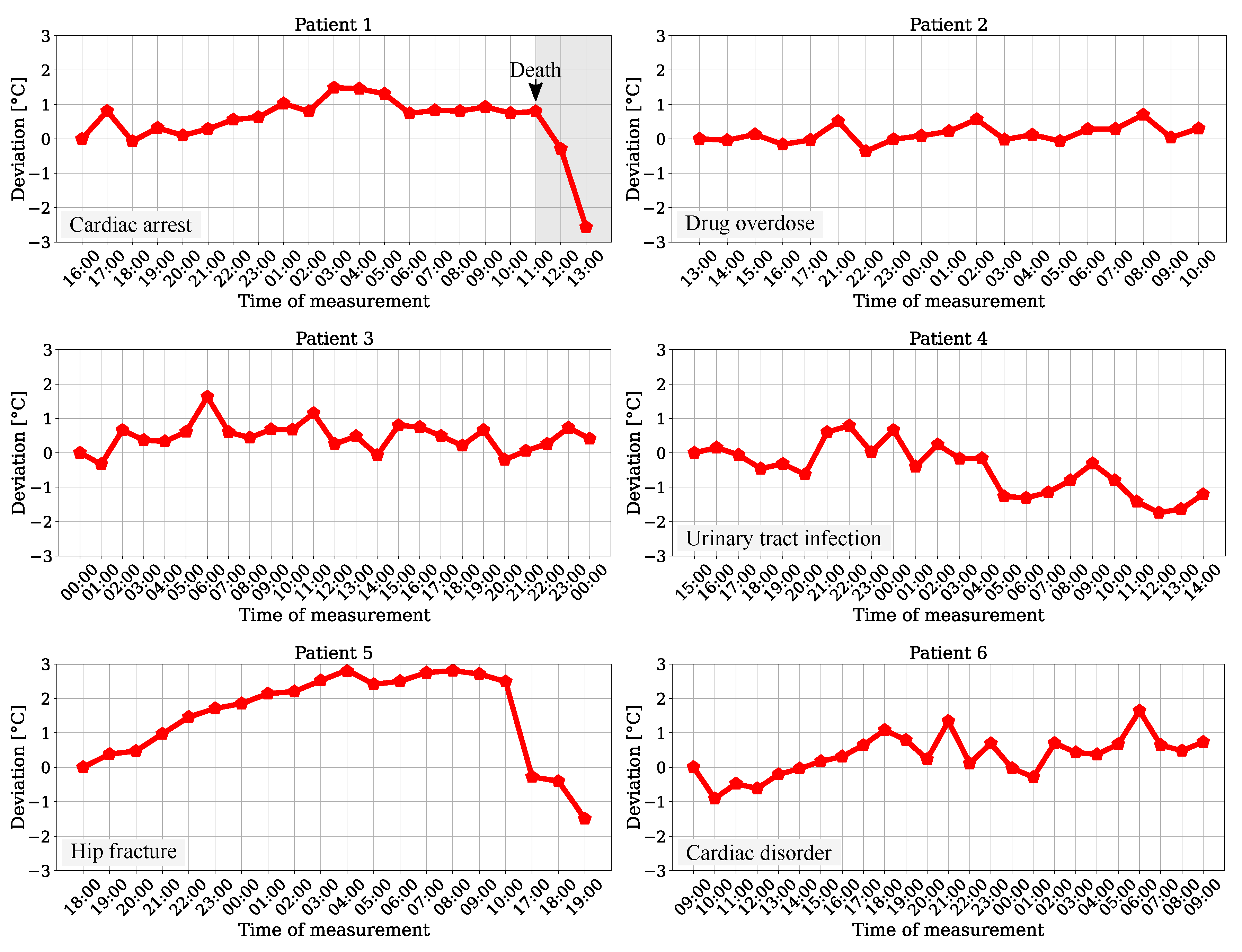
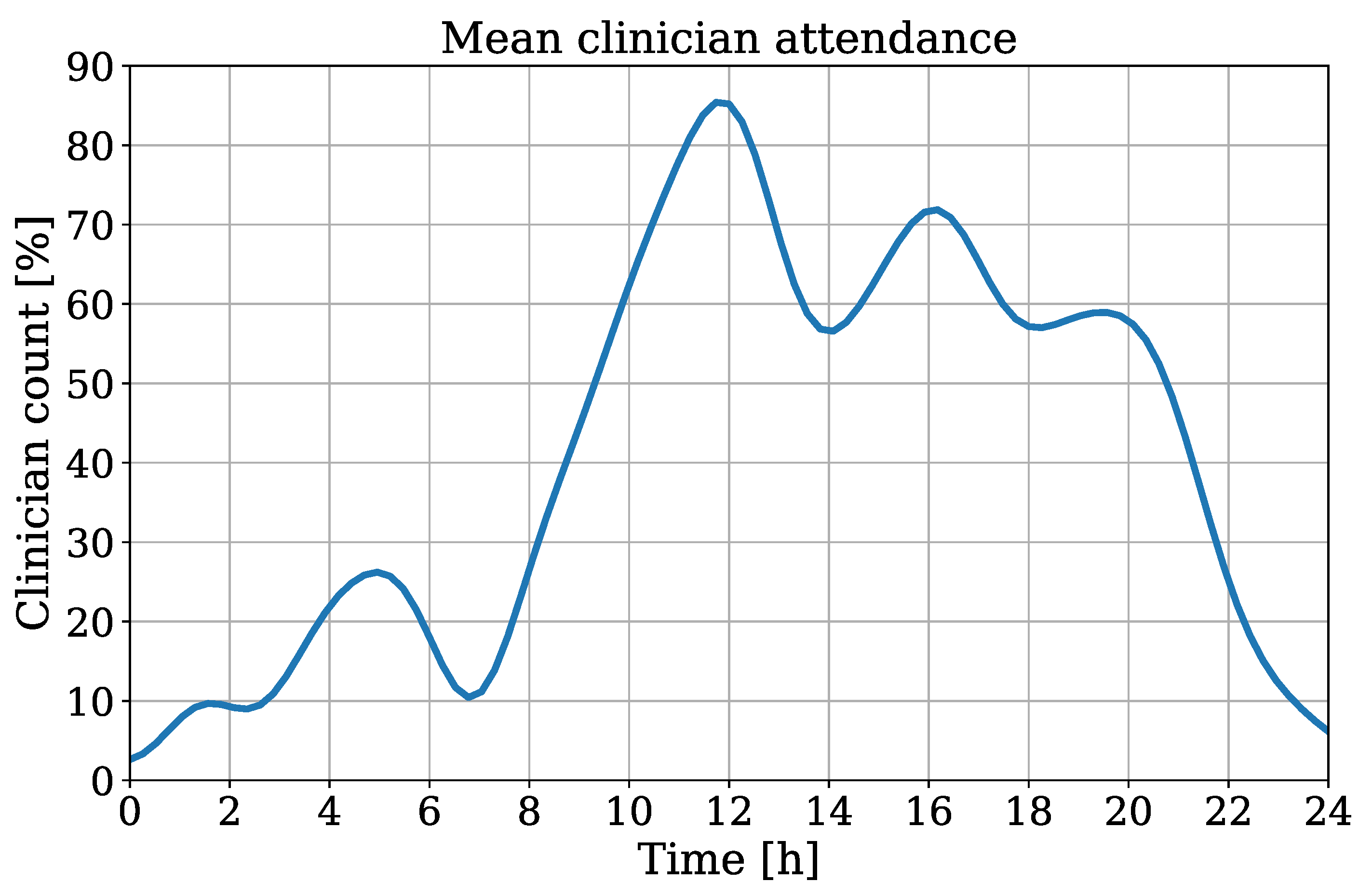
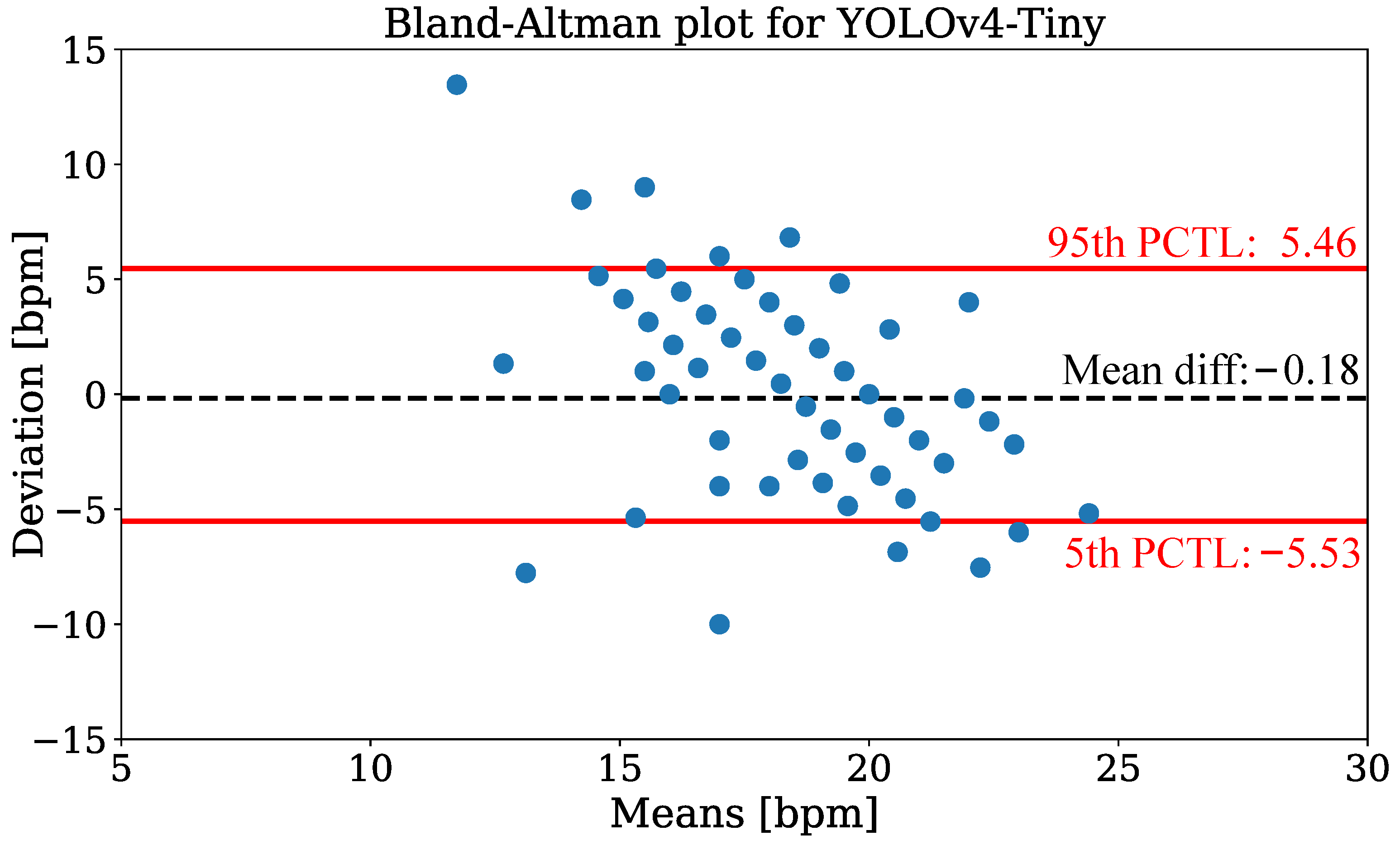
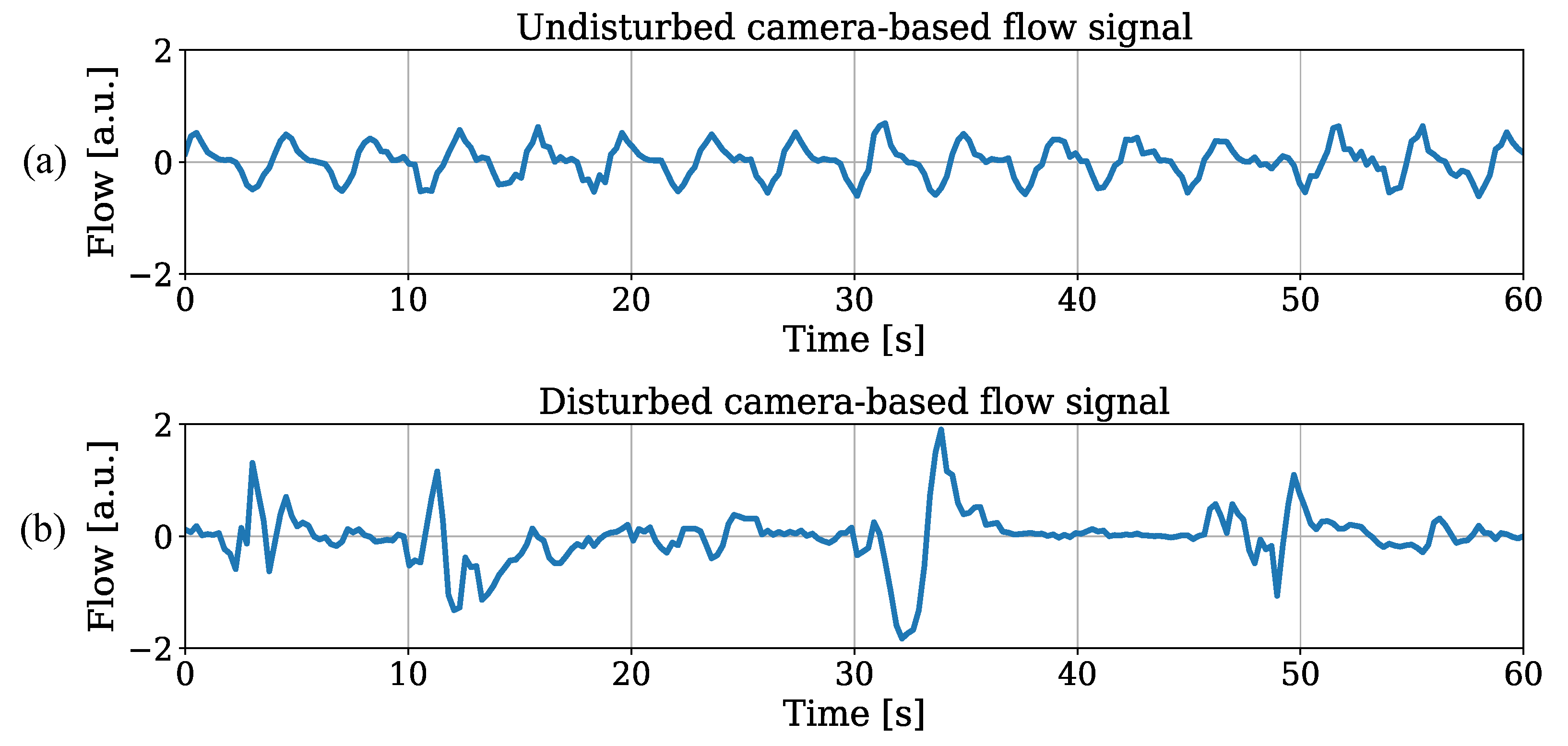
| Dataset | Training/Validation | Test |
|---|---|---|
| Patients | 20 | 6 |
| Frames | 3000 | 900 |
| RR Reference | 0 | 137 |
| Dataset | OF Evaluation |
|---|---|
| Patients | 6 |
| Frames | 1920 per RR Reference |
| YOLOv4 | YOLOv4-Tiny | |||||
|---|---|---|---|---|---|---|
| Fold | IoU | mAP | F | mAP | F | |
| 1 | 0.72 | 0.99 | 0.92 | 0.81 | 0.99 | 0.99 |
| 2 | 0.76 | 0.98 | 0.94 | 0.82 | 0.98 | 0.95 |
| 3 | 0.72 | 0.90 | 0.94 | 0.73 | 0.88 | 0.93 |
| 4 | 0.80 | 0.74 | 0.97 | 0.83 | 0.74 | 0.98 |
| 5 | 0.71 | 0.99 | 0.92 | 0.76 | 0.98 | 0.98 |
| 6 | 0.81 | 0.97 | 0.98 | 0.79 | 0.97 | 0.99 |
| 7 | 0.65 | 0.84 | 0.86 | 0.67 | 0.86 | 0.89 |
| 8 | 0.72 | 0.97 | 0.92 | 0.79 | 0.98 | 0.97 |
| 9 | 0.75 | 0.95 | 0.93 | 0.75 | 0.93 | 0.92 |
| 10 | 0.69 | 0.88 | 0.97 | 0.64 | 0.85 | 0.81 |
| Mean | 0.73 | 0.92 | 0.93 | 0.76 | 0.92 | 0.93 |
| SD | 0.05 | 0.08 | 0.04 | 0.06 | 0.08 | 0.07 |
| Test | 0.70 | 0.95 | 0.91 | 0.75 | 0.94 | 0.93 |
| avg IoU [%] | mAP [%] | |||||||
|---|---|---|---|---|---|---|---|---|
| Detector | Head | Patient | Chest | Clinician | Head | Patient | Chest | Clinician |
| YOLOv4 | 84 | 76 | 54 | 70 | 99 | 99 | 87 | 91 |
| YOLOv4-Tiny | 82 | 78 | 66 | 70 | 99 | 98 | 87 | 89 |
| Platform | YOLOv4 [fps] | YOLOv4-Tiny [fps] |
|---|---|---|
| Jetson Xavier NX | 9 | 47 |
| Jetson AGX Xavier | 19 | 86 |
| Quadro RTX5000 | 80 | 296 |
| w/o Correction | Correction | |
|---|---|---|
| MSE | 0.98 | 0.72 |
| 0.56 | 0.77 | |
| r | 0.75 | 0.88 |
| Patient | Mean | |||||||
|---|---|---|---|---|---|---|---|---|
| 1 | 2 | 3 | 4 | 5 | 6 | |||
| MAE | YOLOv4 | 0.67 | 1.64 | 4.78 | 2.26 | 3.69 | 3.72 | 2.79 |
| YOLOv4-Tiny | 0.67 | 1.64 | 4.71 | 2.25 | 3.69 | 3.18 | 2.69 | |
| Patient | ||||||
|---|---|---|---|---|---|---|
| 1 | 2 | 3 | 4 | 5 | 6 | |
| Coverage [%] | 86 | 60 | 88 | 95 | 84 | 78 |
Publisher’s Note: MDPI stays neutral with regard to jurisdictional claims in published maps and institutional affiliations. |
© 2021 by the authors. Licensee MDPI, Basel, Switzerland. This article is an open access article distributed under the terms and conditions of the Creative Commons Attribution (CC BY) license (http://creativecommons.org/licenses/by/4.0/).
Share and Cite
Lyra, S.; Mayer, L.; Ou, L.; Chen, D.; Timms, P.; Tay, A.; Chan, P.Y.; Ganse, B.; Leonhardt, S.; Hoog Antink, C. A Deep Learning-Based Camera Approach for Vital Sign Monitoring Using Thermography Images for ICU Patients. Sensors 2021, 21, 1495. https://doi.org/10.3390/s21041495
Lyra S, Mayer L, Ou L, Chen D, Timms P, Tay A, Chan PY, Ganse B, Leonhardt S, Hoog Antink C. A Deep Learning-Based Camera Approach for Vital Sign Monitoring Using Thermography Images for ICU Patients. Sensors. 2021; 21(4):1495. https://doi.org/10.3390/s21041495
Chicago/Turabian StyleLyra, Simon, Leon Mayer, Liyang Ou, David Chen, Paddy Timms, Andrew Tay, Peter Y. Chan, Bergita Ganse, Steffen Leonhardt, and Christoph Hoog Antink. 2021. "A Deep Learning-Based Camera Approach for Vital Sign Monitoring Using Thermography Images for ICU Patients" Sensors 21, no. 4: 1495. https://doi.org/10.3390/s21041495
APA StyleLyra, S., Mayer, L., Ou, L., Chen, D., Timms, P., Tay, A., Chan, P. Y., Ganse, B., Leonhardt, S., & Hoog Antink, C. (2021). A Deep Learning-Based Camera Approach for Vital Sign Monitoring Using Thermography Images for ICU Patients. Sensors, 21(4), 1495. https://doi.org/10.3390/s21041495










